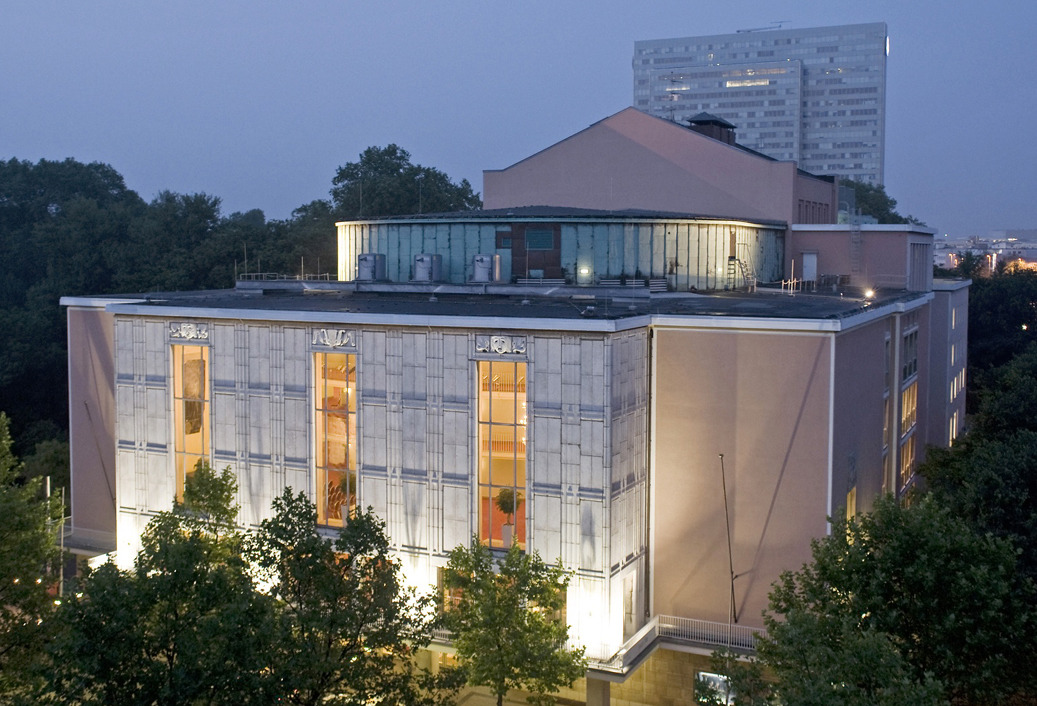Since 1956, the principle of solidarity between Düsseldorf and the financially weaker Duisburg has been in place. The community, balanced at a ratio of two to one, has always proven itself and functions as a logistical feat. Symbolically, the Rhine is the link, practically speaking, it is buses, transporters, and semitrailers that maintain the connection.
The Düsseldorf Opera House on Heinrich-Heine-Allee (where the new city theater opened in 1875, which was severely damaged in 1943) received its current appearance in the mid-1950s. After extensive renovation, restoration, and safety and stage technology upgrades, it has been shining anew since 2007 – including a brightly lit orchestra and ballet rehearsal hall and the huge costume collection in the basement. Rather bulky on the outside, the building, with its beautifully curved foyer staircases and typical design elements of the 1950s, is justifiably a listed building.
A characteristic of the Rhine Opera is – not only in terms of personnel – a strong ensemble that can fill even demanding roles with its own forces. Martin Schläpfer has been appointed to the ballet, whose artistic format is independently asserting itself alongside the exquisite company. This is also manifested in the new name: "Ballet at the Rhine." He was followed in 2020 by the Argentine Demis Volpi. In December 2021, the Düsseldorf City Council approved a new opera building. Instead of renovating the existing building once again, a so-called "Opera House of the Future" is to be built in the coming years, according to a quote from the press release. When exactly it will be created and what it will look like is still unclear.
Ballet enjoyment for people with visual impairments:
Since the start of the 2023/2024 season, there is for the first time in an opera house in Germany a permanently installed inclusion project in the field of dance for ballet lovers with visual impairments. In cooperation with the Ballet Friends of the Deutsche Oper am Rhein e.V. and with support from Aktion Mensch, the Ballet am Rhein regularly offers performances where live descriptions via headphones or a mobile app provide a vivid dance experience for blind people and those with limited vision. Before the auditory experience, there is a tactile tour on the program, where tactile impressions of costumes, wigs, and stage design can be gathered.

